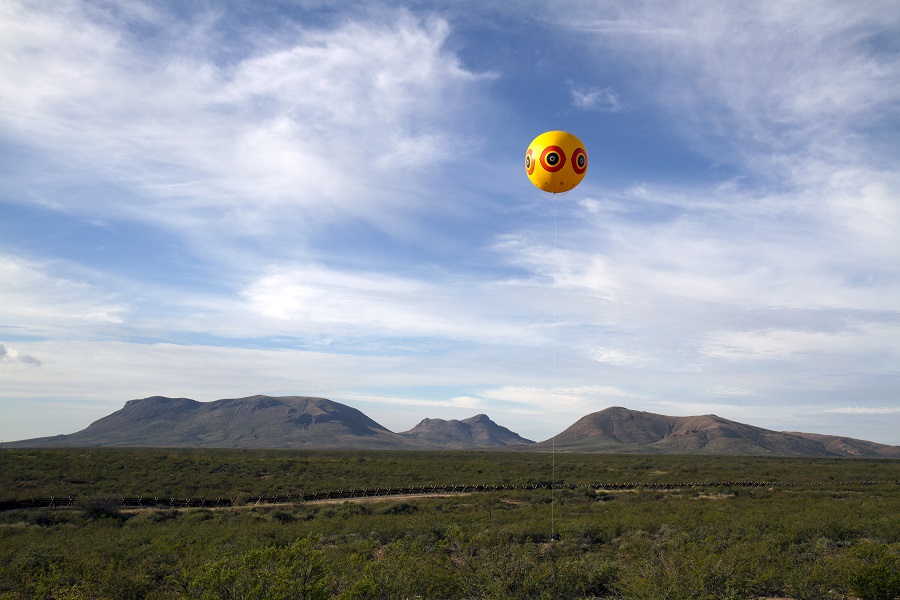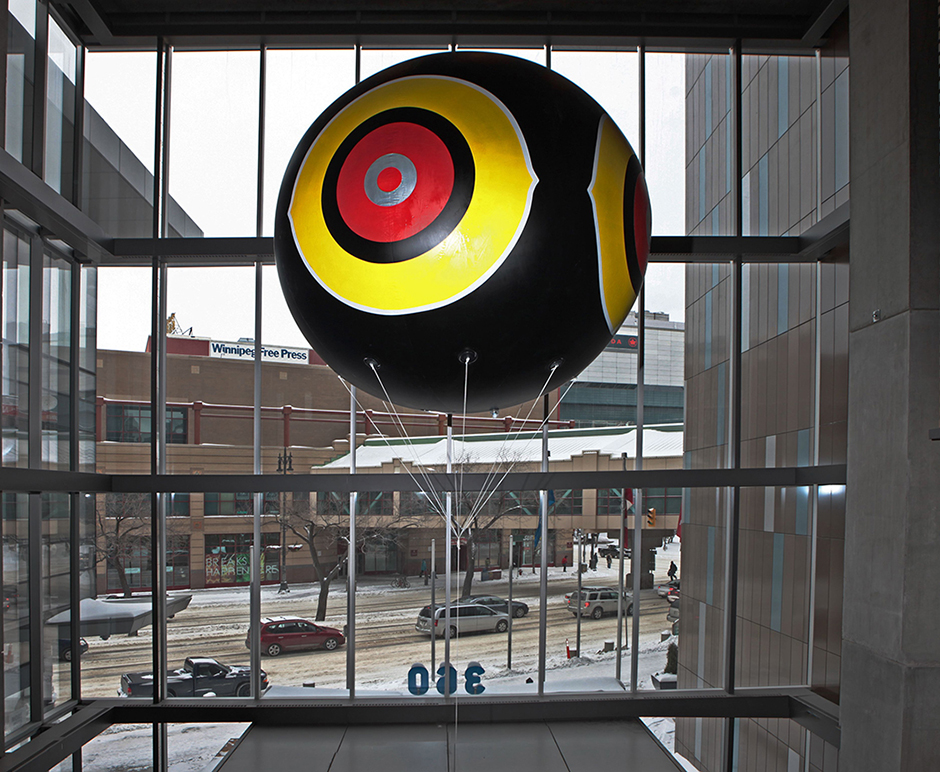Art & Exhibitions
Artist Collective Postcommodity to Fly Giant Eyes Over US/Mexican Border


by
Cait Munro

In early October, the US/Mexican border will become the site of the largest bi-national land art installation in history.
Conceived by artist collective Postcommodity, Repellent Fence is comprised of 26 balloons, each ten feet in diameter, emblazoned with “scare eyes”—ineffective consumer bird repellent products that also happen to co-opt indigenous iconography and aesthetics. The eyes will float 50 feet above the hotly contested border.
“The purpose of this monument is to bi-directionally reach across the U.S./Mexican border as a suture that stitches the peoples of the Americas together—symbolically demonstrating the interconnectedness of the Western Hemisphere by recognizing the land, indigenous peoples, history, relationships, movement and communication,” reads a statement from the collective, which includes Raven Chacon, Cristóbal Martínez, Kade L. Twist, and Nathan Young.
The monumental artwork will be installed through a community action from October 9–12, and will only remain visible for those four days. However, it is part of a larger engagement campaign that includes public programming, performances, and even a cross-border art walk.
In an interview with the journal Afterall, the artists, who have been working together since 2007, revealed that Repellent Fence is the first project they envisioned as a group. “We have been working on it [for] close to ten years now,” says Young.

Postcommodity, Repellent Eye (Winnipeg) (2011).
Photo: Courtesy the artists.
The group has produced several other large and medium-scale projects, both in museum and gallery settings and in various communities. In 2008, they flew a single “scare eye” balloon over Phoenix—a kind of symbolic test run for October’s much larger intervention—and in 2011, they placed a similar sphere inside the Manitoba Hydro corporate headquarters in Winnipeg, Canada.
But their two-mile project along the border will be their most ambitious project yet.
“This act of reinhabiting historically shared terrain and marking it with contemporary versions of ancient icons reveals the US/Mexican border to be what it is: the arbitrary and artificial overlay of power derived through coercion,” says Arizona State University art museum director Gordon Knox.
Related stories:
Artists Bury Migrants on Merkel’s Lawn in Protest
Mexican Artist Creates Donald Trump Piñata Following Anti-Immigration Statements
New York’s 15 Can’t-Miss Summer Public Art Installations